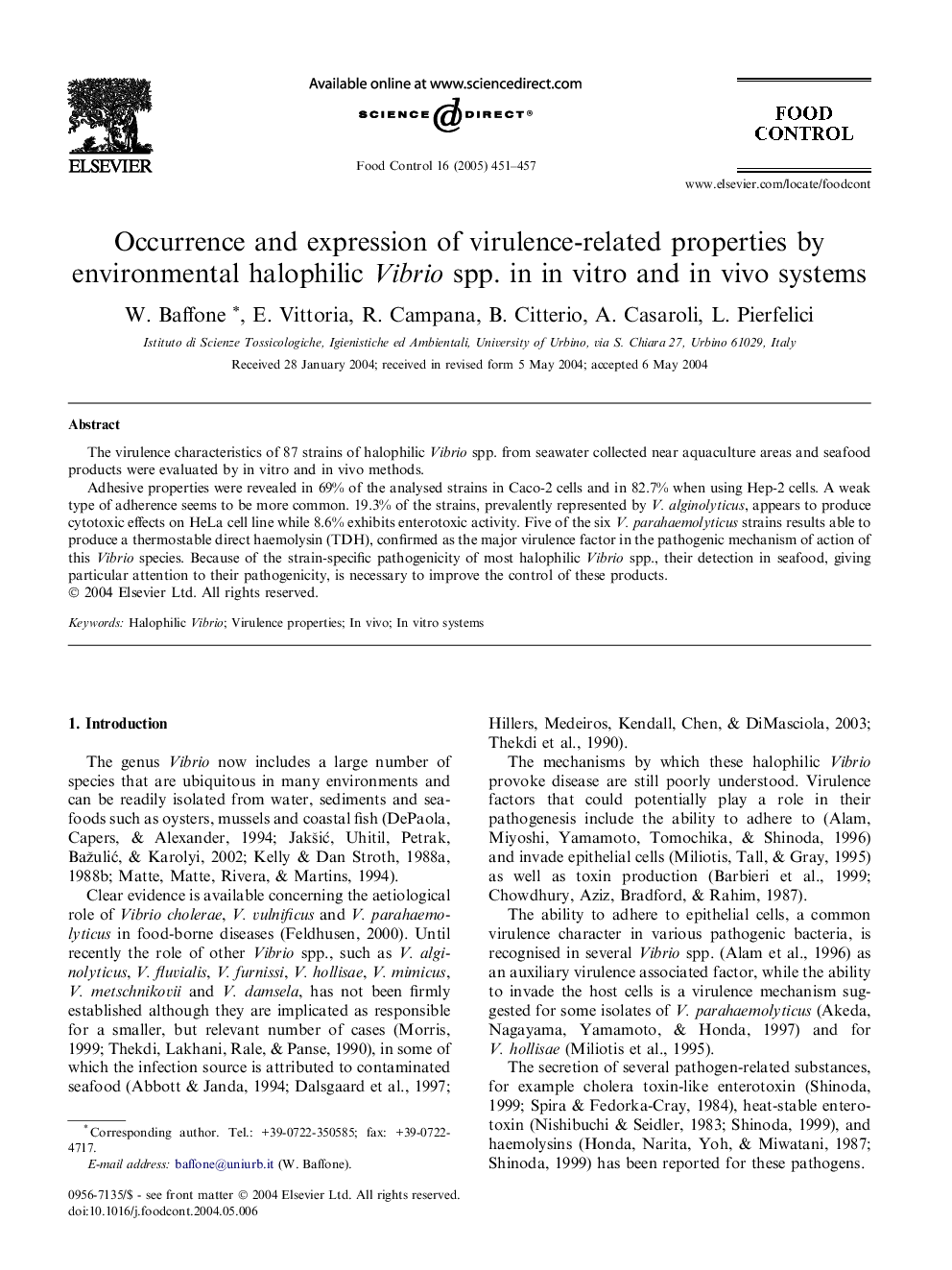| Article ID | Journal | Published Year | Pages | File Type |
|---|---|---|---|---|
| 9486992 | Food Control | 2005 | 7 Pages |
Abstract
Adhesive properties were revealed in 69% of the analysed strains in Caco-2 cells and in 82.7% when using Hep-2 cells. A weak type of adherence seems to be more common. 19.3% of the strains, prevalently represented by V. alginolyticus, appears to produce cytotoxic effects on HeLa cell line while 8.6% exhibits enterotoxic activity. Five of the six V. parahaemolyticus strains results able to produce a thermostable direct haemolysin (TDH), confirmed as the major virulence factor in the pathogenic mechanism of action of this Vibrio species. Because of the strain-specific pathogenicity of most halophilic Vibrio spp., their detection in seafood, giving particular attention to their pathogenicity, is necessary to improve the control of these products.
Related Topics
Life Sciences
Agricultural and Biological Sciences
Food Science
Authors
W. Baffone, E. Vittoria, R. Campana, B. Citterio, A. Casaroli, L. Pierfelici,
